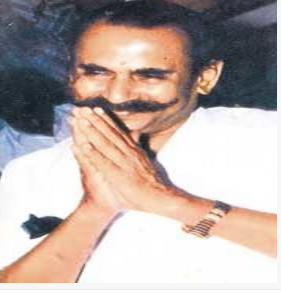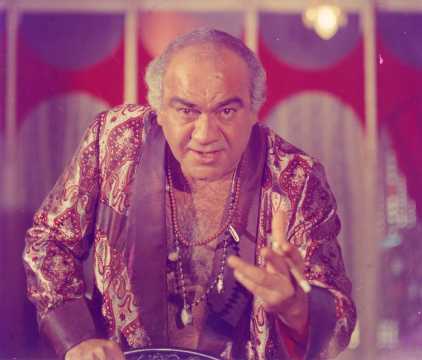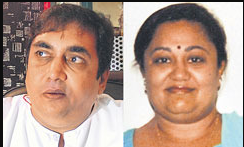KALYANMATKATIPS.Mobi
KalyanMatkaTips.mobi is also known as satta matka 143 also a world of Experts Guessing Forum website and one of the most Visited Satta Site amongst people engaged in Satta Matka, Time Bazar, Milan Day/Night, Kalyan Matka, Rajdhani Day/Night Satta, Mumbai main And We Provide Super Fast and Fastest Results Apart From Other Players in Industry Our Content Helps You To Big wins.We Provide Live Updates, Guessing Forum Where Our Experts Helps You To Quickest Earnings. Free Open and close for Public Welfare Weekly Jodi & Panna with Lifetime Golden win Chart in SPECIAL ZONE You will Get to know Evergreen Tricks Zone and old charts of Kalyan Matka & Mumbai Matka Of 1972 to 2012 With King Maker Khatri's Favorite Panna also know as leaf and behalf of CHARTS ZONE We Provide You Kalyan Chart Mumbai Chart Supreme Chart Milan day Milan Night Chart & Rajdhani Day & Night Jodi Chart With Penal patti leafs.
satta to name a few. Our website has come out as an undisputed leader in this arena since we started working over years ago. And we attribute this success to our consistent efforts in publishing the results of all Satka Matka game at the earliest and quicker than all other players in this market.
KalyanMatkaTips.mobi has carved out a distinct niche for itself since we provide various services to our users and visitors on a regular basis on our platform. We host an online guessing forum, the link to which can easily be obtained by scrolling down on the homepage itself and our experts help people in predicting the result of Satta Matka games. Alongside we provide tips and tricks to our visitors to earn handsome amounts out of this game. In addition, it would be no exaggeration to claim that we were and still remain undisputed leaders in the fastest publishing of Satta Matka games' results on our webpage. This is mainly because we have direct tie ups with organisations managing the various forms of Satta Matka games.
We desire that our users remain updated about the results and guesses so that they can accordingly place their best bets. In order to fulfil this objective, we have come up with an android application for our users to carry updates with them on the move, at the touch of their fingertips. This application will provide you the live Matka results' updates for Time bazaar, Madhur Day, Super Bazar, Milan Day, Rajdhani Day, Kalyan, Madhur Night, Milan Night, Rajdhani Night and Main Mumbai games. Our platform will also tell you about the opening and closing time for the above mentioned games.
We believe that our platform acts as an entertaining source and medium for our users and serves as a binding and amalgamating force for the gamblers situated in all over the world. In addition, we provide timings and live result updates for all based games namely Gali, Desawar, Kuber Matka Furthermore, we maintain a directory of daily records for the Matka games taking place in as Kalyan and Mumbai namely Gali, Disawar, Kalyan, Mumbai, Milan Day/Night and Rajdhani Day/Night. You can easily deduce the information as to what was the result on a particular day, for even few years back. That's an additional advantage of our platform that you would not find anywhere else.
Our committed team of experts is here to assist you in playing Satta Matka games online.
Our objective is to help you recover the money that you might have lost previously.
Eventually, our target is to help you become the ultimate Satta Matka King. So let's play. The game is on!
SATTA MATKA BAZAR
Satta may be a broad word accustomed describe betting . The sport of Matka is usually mentioned as Satta interchangeably owing to its early quality. If you're interested additional in “betting†on such things as sports or casino we recommend you're taking a glance at our homepage for additional topics regarding card-playing on-line.Satta isn't presently legal in Online however it's still business sector. Currently, we've not found any sure sites that supply SattaMatka, however, as an alternate you will need to contemplate lottery. Lotteries became additional engaging on-line as a result of the mix all lotteries on a world level thus those from will leverage their bets by solely selecting lottery cards wherever the jackpot is that the biggest. contains a comparatively tiny lottery jackpot whereas the United States and EU countries have jackpots normally within the 100’s of innumerable Euros/USD. Associate in nursing example would be the compilation or countries at playhugelottos.com.
For alternative card-playing games, an oversized majority of * are still card-playing with native bookies, however additional recently additional are victimization the web at on-line casinos and on-line bookies like Bet365.com for cricket and alternative sports or casino games.
Matka may be a terribly straightforward game and basically may be a sort of lottery. The sport was based by rattan Khatri back within the 70’s and was widespread up till the 90’s. The sport isn't compete noticeably any longer, largely within the regions. Instead several fancy the lottery games additional thus currently.
The game continues to be complete by the large time enthusiasts that bear in mind the times of rattan having celebrities pull attracts for him. the sport has since lost most of its following and have chosen the quicker paced action of reckoning on cricket games via mobile devices or live dealer casinos on the web. What ever happened to the legendary rattan Khatri â€" Matka King? Once his arrest in 1995, he had to discontinue his games and currently crooks are running the sport he white-haired such a lot by fixing the numbers. To the present day, Khatri are often seen at the raceway card-playing horses for under 5-10 RS. a giant fall from grace however his name remains legendary among Satta enthusiasts in city.
SattaMatka is now a very renowned market all over the world and it lies in the market.
SATTA MATKA MARKET INFO AND DATA
Matka India nation correct sattamatka edges sattamatka speculating web site wherever manufacture receive any loss & sattamatka results of many matka market previously inside the planet regarding sattamatka. Many of us usually offer ought kalyanmatka vary & kalyanmatka suggestions greatest kalyanmatka tips ever & we tend to tend to any or all to boot offer ought matka maps municipality matka choice galisattamatka happy choice.
In this article all North yankee nation America} individuals area unit bound to get sattamatka info throughout kalian matka from the switch khatrimatka graph and or chart major the majority {of knowledge|of data|of info} are going to be matka quantity information simply no web site can offer matka chart aboard pana and matka effects punctually to suit your wishes the next is matka quantity presently now promptly promptly directly at once|without delay} and to boot matka tips we tend to tend to now have matka choice software through that the majority of us predetermined matka choice methodology this express software production presents sattamatka lucky vary so strolling back from us you will be ready to get matka vary presently at the aspect of sattamatka wiki to boot. Your spouse sattamatka double can offer the simplest current matka result for anyone WHO is on-line you will be ready to get matka result on on-line net in any matka on-line game
Sattamatka result luck noted on-line game it's essentially a collaborating in game that has its origins in municipality. One altogether the foremost thrilling and intriguing game titles to possess of us continued is usually sattamatka, discharged inside the indian earth is one altogether the foremost performed on net indulgent game titles. The actual game titles area unit usually fully protected Associate in nursing secured fascinating Associate in Nursing example might even be, it's monumental selections of creating Brobdingnagian revenue & get pleasure from to the simplest. End users can merely enter the online web site by mistreatment speculating on-line community through user whole at the aspect of countersign. Their area unit lots connected with video games that happen to be performed day by day activity prospects on-line quite few of us. Quick record associated with sattamatka activity.
Sattamatka edges use takes throughout that is completed with entire safety. These sorts of results which could be reported area unit usually real vary that in turn glimpse from the draw. Your web site presents information that is legitimate and awards the particular winners. Most of these video games usually area unit found in everyday basis and also the sattamatka answers area unit organize around the graphs. Of us use Associate in Nursing large prospect for successful to boot to gaining Brobdingnagian revenue. At the moment there are a unit type of people who're impatient with connectedness these kinds of game titles with the value it offers its shoppers. Sattamatka is one altogether the favored on-line games getting discovered its ends throughout this kalyanmatka information. The actual graph or chart exhibits all of the bringing’s relating to the parents. Your matkaon-line game outcomes occur on the online at the aspect of keep players unbroken entertained each time. There exists presently a colossal go up from the requirement regarding most of these video games and lots of persons everywhere the planet are getting huge gain. Their area unit many involving game titles on the market this can be conjointly very just one cause several people usually area unit actively collaborating in. it's doable to grab the particular lottery minute card to be ready to gain the jackpot add.
About
Matka gambling or satta is a form of lottery which originally involved betting on the opening and closing rates of cotton transmitted from the New York Cotton Exchange. It originates from before the era of Indian independence when it was known as Ankada Jugar ("figures gambling"). In the 1960s, the system was replaced with other ways of generating random numbers, including pulling slips from a large earthenware pot known as a matka, or dealing playing cards. Matka gambling is illegal in India.In the original form of the game, betting would take place on the opening and closing rates of cotton as transmitted to the Bombay Cotton Exchange from the New York Cotton Exchange, via teleprinters. In 1961, the New York Cotton Exchange stopped the practice, which caused the punters to look for alternative ways to keep the matka business alive. Rattan Khatri introduced the idea of declaring opening and closing rates of imaginary products. Numbers would be written on pieces of paper and put into a matka, a large earthen pitcher. One person would then draw a chit and declare the winning numbers. Over the years, the practice changed, so that three numbers were drawn from a pack of playing cards, but the name "matka" was kept.[2] In 1962, Kalyanji Bhagat started the Worli matka. Rattan Khatri introduced the New Worli matka in 1964, with slight modifications to the rules of the game. Kalyanji Bhagat's matka ran for all days of the week, whereas Rattan Khatri’s matka ran only five days a week, from Monday to Friday.[3] During the flourishing of textile mills in Mumbai, many mill workers played matka, resulting in bookies opening their shops in and around the mill areas, predominantly located in Central Mumbai. Central Mumbai became the hub of the matka business in Mumbai. The decades of 1980s and 1990s saw the matka business reach its peak. Betting volumes in excess of Rs. 500 crore would be laid every month. The Mumbai police’s massive crackdown on the matka dens forced dealers to shift their base to the city’s outskirts. Many of them moved to Gujarat, Rajasthan and other states. With no major source of betting in the city, the punters got attracted to other sources of gambling such as online and zhatpat lotteries. Meanwhile, the rich punters began to explore betting on cricket matches.[4] In 1995 there were more than 2,000 big and medium-time bookies in the city and neighboring towns, but since then the numbers have declined substantially to less than 300. Of late,[when?] the average monthly turnover has remained around Rs. 100 crore.[2] The modern matka business is centered around Maharashtra.[citation needed] Matka Kings
A person who has won a great deal of money from matka gambling is known as a "Matka King".
Kalyanji Bhagat

Kalyanji Bhagat was born a farmer in the village of Ratadia, Ganesh Wala in Kutch, Gujarat. Kalyanji's family name was Gala and the name Bhagat, a modification of bhakt, was a title given to their family by the King of Kutch for their religiousness. He arrived as a migrant in Bombay in 1941 and initially did odd jobs such as masala ferriwala (spice seller) to managing a grocery store. In the 1960s, when Kalyanji Bhagat was running a grocery shop in Worli, he pioneered matka gambling by accepting bets based on the opening and closing rates of cotton traded on the New York wholesale market. He used to operate from the compound of his building Vinod Mahal, in Worli.[5][6] After Kalyanji Bhagat, his son Suresh Bhagat managed the business along with his wife Jaya Bhagat whom he married in 1979.
Suresh Bhagat

On June 11, 2008, a truck rammed into a Mahindra Scorpio in which Suresh Bhagat and six others, including his lawyer and bodyguards were travelling, killing all of them. They were returning from an Alibaug court, where the hearing of a 1998 narcotics case had been held. During investigations by the police it was revealed that Hitesh Bhagat (Suresh Bhagat's son) and his mother Jaya Bhagat had hatched the plot to kill Suresh Bhagat. Hitesh and nine others, including Jaya, were arrested and were tried under the stringent act of Maharashtra Control of Organised Crime Act and subsequently convicted.
Ratan Khatri

Rattan Khatri, known as the Matka King, from the early 1960s to mid-1990s controlled a nationwide illegal gambling network with international connections which involved several lakh punters and dealt with crores of rupess. Khatri's matka started in the bustling business area of Dhanji Street in Mumbadevi where idlers used to wager on the daily trickle of the fluctuating cotton rates from the New York market. Gradually, it became a big gambling hub as the quantum of bets and betters increased. Due to a row over a winning number plus the New York market’s five-day week schedule, compulsive betters began looking for alternatives. Based on the requests of his friends, Khatri started his own syndicate and started drawing three cards to decide the day’s number. Khatri's betting was considered more genuine as the cards were reportedly opened in the presence of the patron. During the emergency in India, Khatri was jailed and served 19 months behind bars. He has retired from the gambling business and lives near Tardeo; however, he still does visit the Mahalaxmi Racecourse to bet on his favorite horses.
Suresh Bhagat With His Wife Jaya Bhagat


Terminology
Term Meaning/Explanation
Matka- The word matka is derived from a word for an earthen pot. Such pots were used in the past to draw the numbers.
Single- Any digit between 0 and 9 which involves in betting.[clarification needed]
Jodi/Pair- Any pair of two digits between 00 and 99 involves in matka (e.g. : 52)[clarification needed]
Patti/Panna- A three digit result comes as betting result. All three digit number is patti/panna. Only limited 3 digit numbers are used.[clarification needed]
Open result / close result The outcome of matka betting is divided into two parts. The first part is called open result and the second part close result.
SP/DP/TP SP stands for Single Patti e.g. 123, DP stands for Double Patti e.g. 112, and TP stands for Tripple Patti e.g. 111
Cycle Patti- The last two digit of the patti is called the cycle patti or cp (e.g. if the patti is 128, the cycle patti is 28)
Farak- The Farak is how many difference from close result to open result (e.g.if the jodi/pair is 57, 7-5; the farak is 2; some another: "73" is 13-7 - 6 )
Berij- The Berij is last digit of jodi's/pair's sum. (e.g. if pair is 76, berij is 7+6 = 13; last digit is 3; means berij is 3)